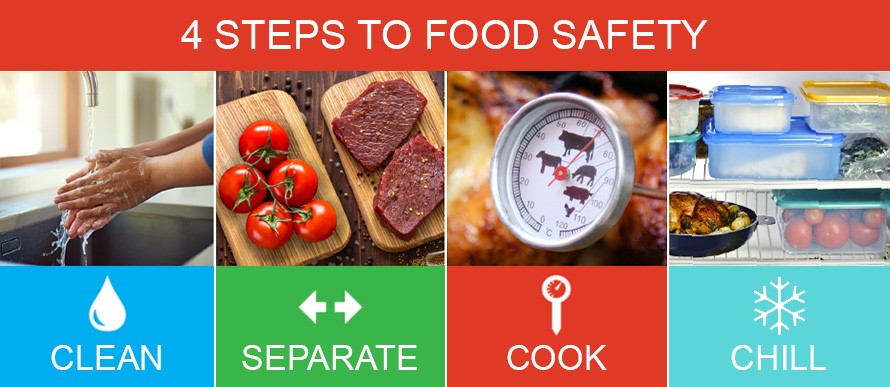
Keeping Food Safe
It is estimated that each year, roughly 48 million Americans get sick, 128,000 are hospitalized, and 3,000 die of foodborne diseases. This goes to show how important it is to keep the foods that we are consuming safe! When preparing or preserving food, it is very important to keep food safety at the top of the list.
Follow these 4 steps to ensure that you are doing your part to stop preventable diseases.
- CLEAN : Washing your hands and cleaning surfaces often will reduce the risk of bacteria spreading. This is especially true after handling raw meat products and fresh produce.
- SEPARATE: Cross contamination is the term used to describe when pathogens are transferred from one surface to another. This occurs when ready to eat foods such as fresh fruits and vegetables are cut on the same unwashed cutting board as raw meats.
- COOK: Making sure that food is cooked to the correct internal temperature is one of the most important things to consider. By checking your foods internal temperature with a food thermometer, you can ensure that the likelihood of the existence of pathogens in your food is reduced. Meat is especially important to temp check before eating.
- CHILL: Keep foods out of the “Temperature Danger Zone” (40o – 140o F). Harmful bacteria grow rapidly between these temperatures. Make sure to refrigerate leftovers within 2 hours to minimize bacteria growth. Keep a thermometer in your refrigerator to verify that it is always below 40oF.
Safe Food Storage
If food is not stored properly, it will not last for very long. Always try to use the First In, First Out rule, meaning that you use the oldest food items first. Put newly purchased foods behind the same foods already in your pantry. It can be hard to know how long and under what conditions certain foods should be stored. Clink on the following links to see the recommended guidelines.
Disasters and Power Outages
Salvaging and handling food after power outages, floods and other natural disasters may raise many questions and present some challenges. Refer to Disaster and Power Outages when recovering food from a natural disaster.
Resources
- Rapid Response Center
- Fight BAC!
- Kansas Department of Agriculture Food Safety
- USDA Food Safety
- K-State Food Safety
- K-State ServSafe
- FDA Recalls and Withdrawals
- USDA Recalls